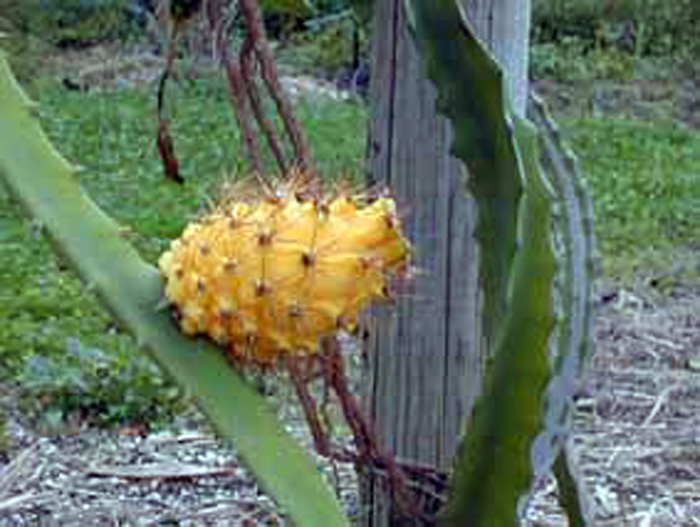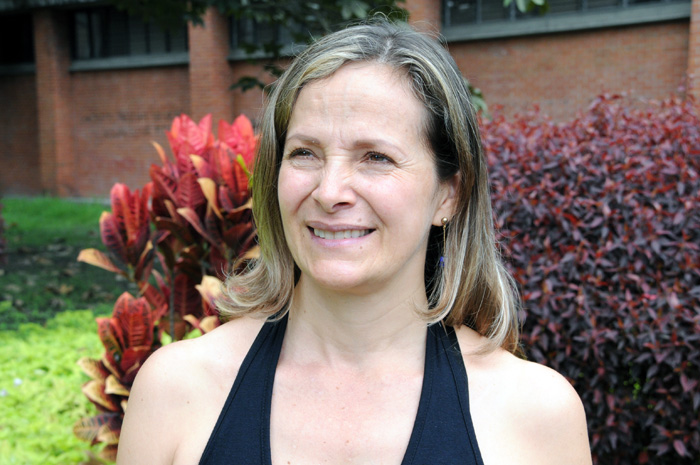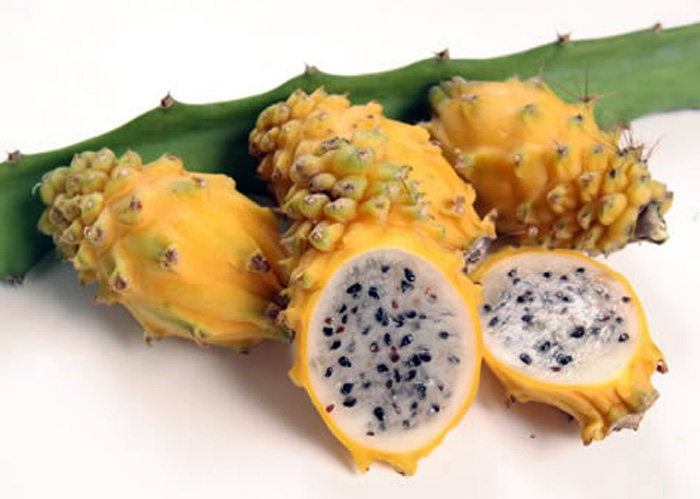This is indicated in one of the three studies that Universidad Nacional de Colombia in Palmira made on this fruit through the research group coordinated by Professor Liliana Serna Cock.
Pitahaya is, according to a definition given by the Royal Spanish Academy, "a plant of the Cactaceas family, climber and with flowers depending on their variety. Some of them produce an edible fruit," as the variety that is cultivated and exported in Colombia. It is known as "the dragon"s fruit."
This is a very delicate fruit in terms of transportation and its life lasts around 12 to 13 days. Through a research work made by the group in Palmira Campus, the life of this fruit is prolonged three days more, which means, the ripening process can be both, retarded and accelerated.
"An alternative, using methylcyclopropene, a ripening retardant, was proposed in order to change the seasonality of the crop. We achieved increasing the useful life of the fruit in three days, during pre-harvest and postharvest. The innovation is that when the substance is applied during the pre-harvest, the ripening process is accelerated, and on the contrary, during postharvest, ripening is retarded," explained the scientist.
Professor Serna asserted that when talking about three days more of life for this fragile fruit, it does not sound that much, however, it represents 20% of the preserved production that would be benefited from this labor.
She mentioned that the labors started in 2006, aiming at increasing the competitiveness in the pitahaya sector in Colombia and offering more benefits to its exportations.
The other project proposed by the team of Universidad Nacional de Colombia in Palmira was to find agro-industrialization activities with added value for yellow pitahaya. This fruit is very difficult to cultivate in the world and it is very limited due to transportation difficulties. 90% of the fruit is water and it is rich in iron, calcium and phosphorus. Its nutritional value is of 210 kJ/100 g, and contains vitamins B,C and E.
"With the cooperation of Professors from the Industrial Design program and under my coordination, several selection, classification and recollection tools were studied and alternatives such as lyophilisation and osmolyophilisation were proposed. Some samples of the fruit after the processes of lyophilisation and osmolyophilisation we sent to Japan, requested by Asopotahaya, and they in the middle of serious negotiations," asserted the expert.
The researcher also mentioned that the third project, which is currently looking for support, used the advancements made by Universidad Nacional de Colombia with their group of acido-lactic bacteria. "With the use of acido-lactic bacteria we can control basal rot, a disease that affects this fruit," asserted the researcher.
Dragon"s fruit is produces especially in Central America, Thailand, Vietnam and Colombia.
 Correo Electrónico
Correo Electrónico
 DNINFOA - SIA
DNINFOA - SIA
 Bibliotecas
Bibliotecas
 Convocatorias
Convocatorias
 Identidad UNAL
Identidad UNAL





